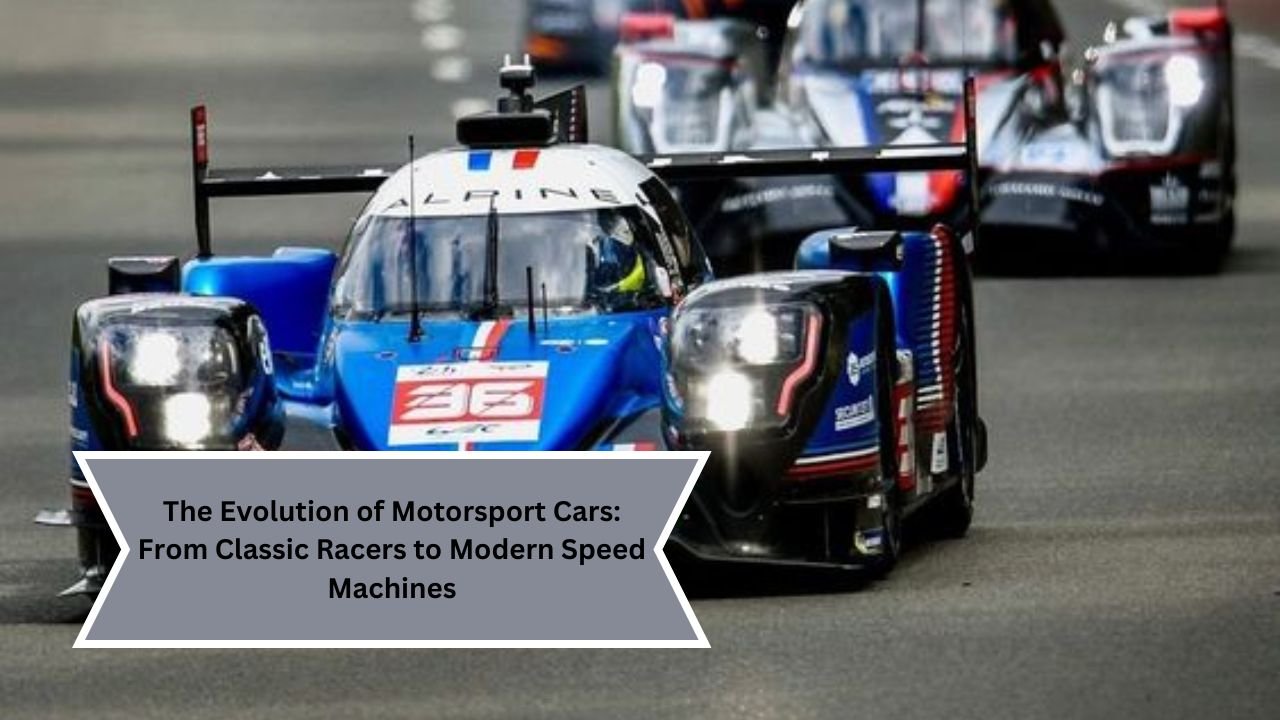Motorsport has always captivated enthusiasts with its blend of speed, skill, and engineering prowess. The evolution of motorsport cars reflects not only advancements in technology but also changing aesthetics, safety standards, and the very essence of competition. This article delves into the fascinating journey of motorsport cars, from their humble beginnings to today’s sophisticated speed machines.
The Early Years: The Birth of Motorsport
The roots of motorsport can be traced back to the late 19th century when the first automobile races were held. Early cars were primitive, with limited speed and power. These vehicles, such as the 1901 Mercedes 35 HP, were more about ingenuity than performance. They were heavy, lacked aerodynamic design, and were often unreliable. However, these early racers laid the groundwork for a burgeoning sport, igniting a passion for speed that would only grow over the decades.
The Paris-Bordeaux-Paris race in 1895 is often cited as one of the first major motorsport events. The cars involved were essentially modified road vehicles, and the event highlighted the challenges of endurance and reliability. It was an era where the focus was less on speed and more on completing the course, often over rough and unpaved roads.
The Golden Age of Racing: 1920s to 1950s
As technology progressed, so did the performance of racing cars. The 1920s saw the introduction of more sophisticated designs and materials, leading to the emergence of iconic marques such as Alfa Romeo, Bugatti, and Maserati. These manufacturers started to understand the importance of aerodynamics and lightweight construction. The Alfa Romeo P2, for example, dominated the racing scene with its innovative supercharged engine and lightweight chassis.
The 1930s introduced a new level of engineering excellence, exemplified by cars like the Auto Union Type C and the Mercedes-Benz W125. These vehicles boasted streamlined designs that significantly improved speed. The emphasis was on power and aerodynamics, a trend that would continue to define motorsport car design.
Post-World War II, the racing landscape transformed dramatically. The introduction of the Formula One World Championship in 1950 marked a new era. Cars like the Ferrari 500 and the Maserati 250F showcased the blend of engineering and artistry that defined this period. This was the time when motorsport became not just a sport but a spectacle, drawing huge crowds and igniting the passion of millions.
The Rise of the Sports Car: 1960s to 1980s
The 1960s and 1970s witnessed a surge in popularity for sports cars, which began to influence the design of racing vehicles. Brands like Porsche, Ford, and Lotus became household names, and models such as the Porsche 917 and the Ford GT40 pushed the boundaries of performance. The 24 Hours of Le Mans became a battleground for these manufacturers, showcasing their engineering feats.
The introduction of Group 5 and Group 4 racing categories in the 1970s further revolutionized motorsport cars. Manufacturers began to create cars that were specifically designed for racing, often based on road-going models but heavily modified for competition. The iconic BMW M1 and the Lancia Stratos are prime examples of how manufacturers embraced motorsport to elevate their brand and push the limits of what cars could achieve.
The Technological Revolution: 1980s to 2000s
The late 20th century marked a significant shift in motorsport car design and technology. With the advent of computer-aided design (CAD) and sophisticated aerodynamics testing, engineers could create cars that were lighter, faster, and more efficient. The emergence of turbocharged engines, active suspension systems, and advanced materials like carbon fiber revolutionized racing.
One of the most notable cars from this era is the McLaren MP4/4, which dominated the 1988 Formula One season with its powerful Honda turbo engine and groundbreaking aerodynamics. This car demonstrated how technology could be harnessed to achieve unparalleled performance, setting records that would stand for years.
The World Rally Championship (WRC) also saw significant advancements during this period. Vehicles like the Audi Quattro introduced all-wheel drive systems, allowing cars to handle challenging terrains with ease. The blend of speed and versatility captured the imagination of fans worldwide.
Modern Motorsport: The Current Era
Today, motorsport cars are at the pinnacle of technological advancement. The focus has shifted not only to speed but also to sustainability. The introduction of hybrid powertrains and electric racing series, such as Formula E, represents a shift toward greener technologies without compromising performance. Manufacturers like Porsche and Audi have embraced this trend, developing cutting-edge technology that blends speed with environmental responsibility.
Current Formula One cars, such as the Mercedes-AMG W11, feature hybrid power units that deliver incredible performance while reducing emissions. These vehicles are equipped with advanced telemetry systems that provide real-time data to engineers, allowing for continuous optimization of performance during races.
The aesthetics of modern motorsport cars have also evolved. The sleek, aggressive designs reflect their aerodynamic capabilities, with large rear wings and intricate body shapes that enhance downforce. These cars are not only built for speed but also for visual impact, making them a focal point of motorsport events.
The Future of Motorsport Cars
Looking ahead, the future of motorsport cars promises to be as exciting as its past. Innovations in materials, such as graphene and lightweight composites, will further enhance performance. Autonomous technology may also play a role, with discussions around self-driving racing cars becoming more prominent.
The shift toward sustainability will likely continue, with more racing series adopting electric and hybrid technologies. As motorsport evolves, it will undoubtedly adapt to the challenges of the 21st century, balancing the need for speed with environmental considerations.
Conclusion
The evolution of motorsport cars is a testament to human ingenuity, creativity, and the relentless pursuit of speed. From the early days of rudimentary machines to today’s technologically advanced speed machines, the journey has been marked by significant milestones and groundbreaking innovations. As we look to the future, the passion for motorsport will undoubtedly continue to inspire engineers and enthusiasts alike, ensuring that the thrill of racing endures for generations to come.

